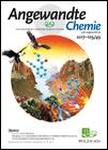版权所有:内蒙古大学图书馆 技术提供:维普资讯• 智图
内蒙古自治区呼和浩特市赛罕区大学西街235号 邮编: 010021

作者机构:Tianjin Key Laboratory of Materials Laminating Fabrication and Interface Control Technology School of Materials Science and Engineering Hebei University of Technology Tianjin 300401 People's Republic of China National Industry-Education Platform of Energy Storage Tianjin University 135 Yaguan Road Tianjin 300350 People's Republic of China Xi'an Key Laboratory of Functional Organic Porous Materials School of Chemistry and Chemical Engineering Northwestern Polytechnical University Xi'an 710129 P. R. China Tsinghua-Berkeley Shenzhen Institute & Tsinghua Shenzhen International Graduate School Tsinghua University Shenzhen 518055 P. R. China Joint School of National University of Singapore and Tianjin University International Campus of Tianjin University Binhai New City Fuzhou 350207 P. R. China
出 版 物:《Angewandte Chemie》
年 卷 期:2024年第136卷第43期
学科分类:081704[工学-应用化学] 08[工学] 0817[工学-化学工程与技术]
主 题:nanoreactor spatial confinement function atomically catalytic function reversible conversion sodium-ion batteries
摘 要:Conversion-type electrode materials have gained massive research attention in sodium-ion batteries (SIBs), but their limited reversibility hampers practical use. Herein, we report a bifunctional nanoreactor to boost highly reversible sodium-ion storage, wherein a record-high reversible degree of 85.65 % is achieved for MoS 2 anodes. Composed of nitrogen-doped carbon-supported single atom Mn (NC-SAMn), this bifunctional nanoreactor concurrently confines active materials spatially and catalyzes reaction kinetics. In situ/ex situ characterizations including spectroscopy, microscopy, and electrochemistry, combined with theoretical simulations containing density functional theory and molecular dynamics, confirm that the NC-SAMn nanoreactors facilitate the electron/ion transfer, promote the distribution and interconnection of discharging products (Na 2 S/Mo), and reduce the Na 2 S decomposition barrier. As a result, the nanoreactor-promoted MoS 2 anodes exhibit ultra-stable cycling with a capacity retention of 99.86 % after 200 cycles in the full cell. This work demonstrates the superiority of bifunctional nanoreactors with two-dimensional confined and catalytic effects, providing a feasible approach to improve the reversibility for a wide range of conversion-type electrode materials, thereby enhancing the application potential for long-cycled SIBs.